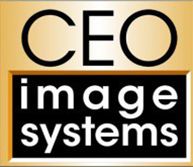Document Management Software for Education
Automate your document management and improve your workflow

Image Executive is our document management software solution developed specifically for the educational market. A growing number of K-12 schools, school districts, colleges and universities across the US use Image Executive to manage their student records, HR records as well as financial and other documents. We understand the many different types of documents schools deal with and the administrative processes and workflows. We created Image Executive to solve the document management needs of school administrators and personnel.
“The top reasons organizations turn to a document capture solution is for improved searchability, sharing of documents across departments, improved productivity, and reduced physical storage space.“
The Image Executive document management system is a comprehensive solution, providing an integrated platform for electronic records management. CEO Image Executive incorporates document scanning, document organization and filing, secure storage, and search and view for all student records, HR records and business documents. The CEO Image Executive system is scalable from a standalone office, to a district-wide multi-site, multi-departmental deployment.

How it Works
Scan and File it in seconds.
Take Control and Manage.
Secure it and Retrieve it.
Features
Image Executive helps organizations manage every aspect of their record keeping, which improves business performance outcomes while providing document security. Our software also provides an effective, efficient and compliant solution to meet the challenges in your organization. You can create and manage a system that addresses these critical information management questions:
What kinds of documents will be put into the system?
Most organizations process and file a wide variety of documents. When putting documents into a filing system, it is often best to consider how these documents will be used (i.e. how they will be named and pulled from the system). Two examples are described below:
1. An Accounts Payable department might file invoice records, purchase orders, packing slips, and contact information. Each of these kinds of documents relate to payees. These records might be pulled when paying bills or reviewing accounting information.
2. An academic unit at a university might file course packets (for classes taught), grant information, performance reviews, and terms information. Each of these kinds of documents relate to professors. These records might be pulled when scheduling classes.
The filing system enables users to group together a wide variety of documents relating to one topic, while allowing documents of similar types to be pulled from various topics. As with a traditional filing system, Image Executive CEO uses folders to group documents relating to a particular client, product, or vendor. This may be considered a “topic oriented” filing system. Image Executive CEO facilitates the use of a “function oriented” filing system as well by allowing users to classify types of documents with the application of indices. System users constantly impress our trainers and software developers by devising creative and efficient uses of this multidimensional filing system. When new ideas are presented, CEO attempts to integrate them in future revisions. Feel free to share your ideas for improvements.
Who needs access to these documents?
Organizations often have a variety of document access needs. One of these usually involves security. In the hard copy world, an employee might be able to access a centrally located filing cabinet, raising security issues that are often resolved by splitting the filing system into public locations and secure locations. Image Executive CEO provides a robust security system. Access to documents can be limited both by department and by a security level assigned to each document. In addition, access to Image Executive CEO functions may be limited by user permissions.
Another need usually involves flexibility. Two users, for example, might need to access the same document, but they might begin their searches with completely different search criteria. Image Executive CEO provides a flexible interface for accessing Documents. Users with access to more than one department can use the same search criteria to retrieve documents across several departments. Multiple users (possibly from multiple locations!) can access the same document simultaneously. The Internet browser/viewer allows one user to send a link to another user on the system to view a particular document. The receiving user must have privileges to that department/folder/document.
How are documents currently filed?
Take this opportunity to examine your current filing system. Most likely, your existing system can be easily adapted to the Imaging System. Electronic records, such as a payroll database or an electronic address book, might even be useful for importing data into the new system. Data from this import can be used to create and name folders, allowing users to begin filing almost immediately.
Consider this an opportunity to improve your filing system. Bear in mind that the Image Executive CEO is not subject to the physical limitations of file folders, filing cabinets, and paper documents. Image Executive CEO, for example, allows the same document to be filed in more than one folder at once. The term “Folder” is really just a metaphor. Folders do not manage the locations where documents are stored. More appropriately, folders organize and manage one of the many ways documents can be accessed.
Documents are assigned to Folders; and Indices (such as document description, document date, etc) are assigned to Documents. It is important to note that documents are not explicitly named. They are given document descriptions and document dates when filed, both of which are searchable fields. The most common searches are those done by folder name, which gets its data from the Folder Description field. Innovative users have employed document indices in a wide variety of ways to hold data that is part of the Document.
How are documents currently retrieved?
A particular department, sometimes even a particular user, often begins a search with the same kind of key information. A last name, a social security number, or a transaction number are typical starting points. Does this data lead directly to the document in question? Or are several criteria needed to zero in on one particular document? Answers to these questions might vary from department to department.
The Image Executive CEO flexible search and retrieval system makes wading through previously disparate and unwieldy files a snap. Virtually unlimited fields are provided to classify folders by criteria particular to your organization. The topic oriented classification scheme facilitated by folders and the function oriented classification scheme facilitated by indices allow users to focus on their search targets from many angles.
How is consistency of the filing system maintained?
In the hard copy world, filing protocol can vary from office to office. Once an organizational protocol is determined, a system administrator can be assigned to oversee passwords and privileges. Administrators, for example, can select the users who have permission to create new Folders or Attributes, thereby preserving the integrity of the indexing system. Utilizing templates provides users with predetermined folder, document, and index options. CEO provides flexibility between consistency and individual needs.
